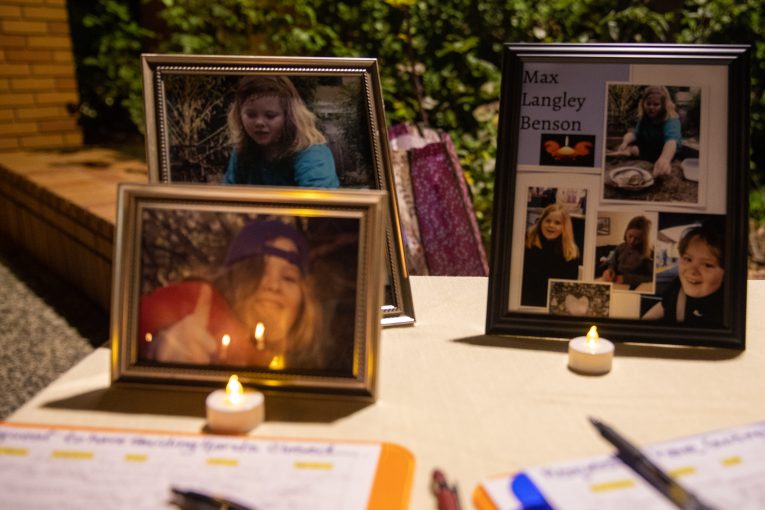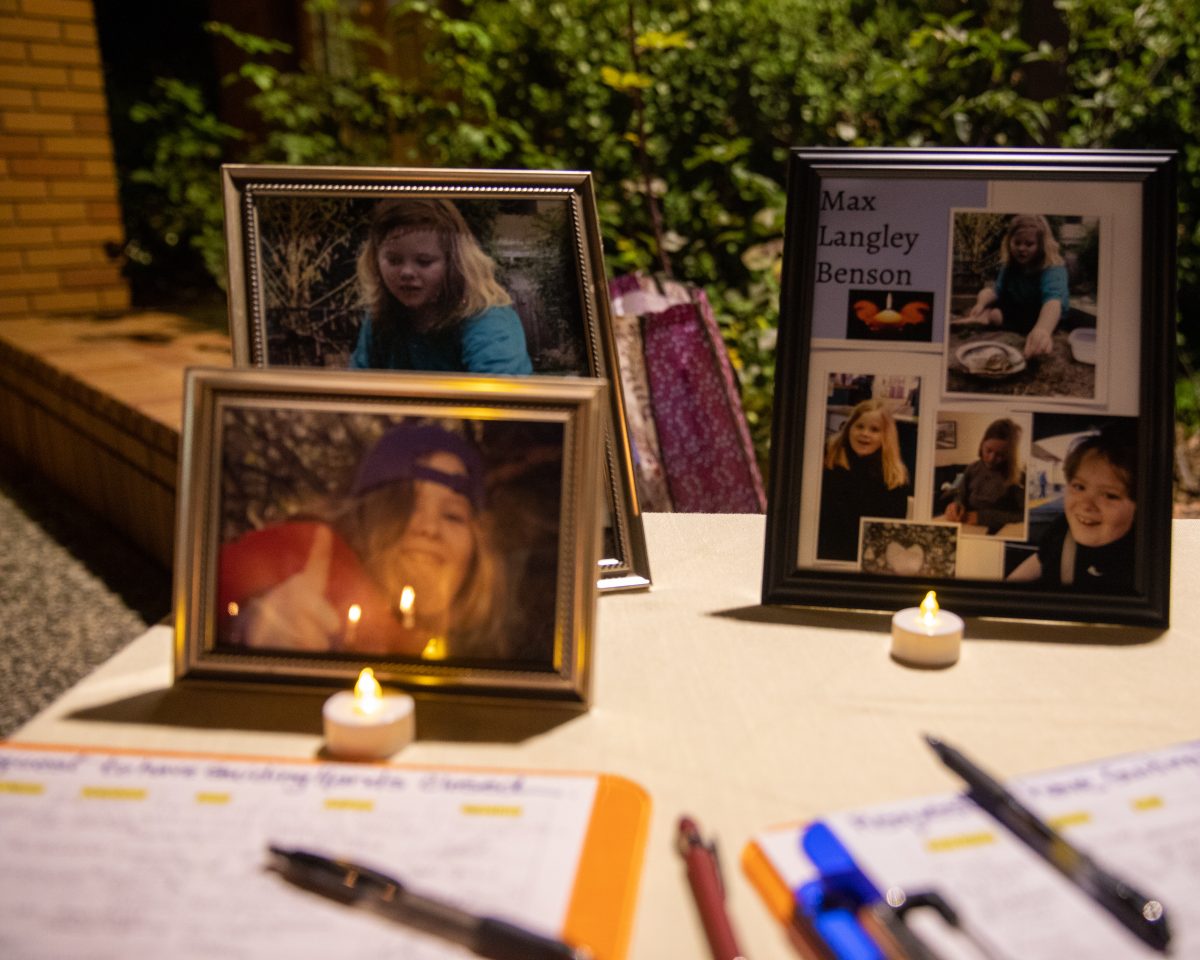
 By David M. Greenwald
By David M. Greenwald
Executive Editor
It has been nearly four years since the tragic death of 13-year-old Davis resident Max Benson, a student who died after being restrained by staff at Guiding Hands. As a result, the school was shut down and the staff are being criminally prosecuted for their actions.
One of the issues that arose was the fact that DJUSD placed a student in its care in non-public school settings.
Last week, the U.S. Department of Education’s Office for Civil Rights (OCR) announced that DJUSD has “entered into a resolution agreement to ensure that its restraint and seclusion policies and practices do not deny students with disabilities a free appropriate public education (FAPE).”
OCR examined whether the district’s use of restraint and seclusion in the 2017-2018 and 2018-2019 school years denied its students with disabilities a FAPE in violation of Section 504 of the Rehabilitation Act of 1973 (Section 504), Title II of the Americans with Disabilities Act of 1990 (Title II), and their implementing regulations.
The investigation found that indeed the district had “placed three of its students with  disabilities in nonpublic school settings and violated their rights under Section 504 and Title II.”
disabilities in nonpublic school settings and violated their rights under Section 504 and Title II.”
This was because the district:
- Failed to ensure that district staff making placement decisions for these students had access to and carefully considered information obtained about the use of physical restraint and/or seclusion with these students.
- Separately failed to ensure that those making decisions regarding behavioral interventions for these students were knowledgeable about each student, the meaning of the evaluation data, and the placement.
- Failed to reevaluate these students to determine whether the repeated use of restraint and seclusion for these students denied them a FAPE and if additional aids and services were appropriate to provide a FAPE. And,
- Denied a FAPE to all three students based on the above failures and resulting harms to the students.
“I am grateful for Davis Joint Unified School District’s commitment to take important steps to ensure that its students with disabilities are not denied a free and appropriate public education as a result of the use of restraint or seclusion whether they are placed in district schools or nonpublic school settings,” said Assistant Secretary for Civil Rights Catherine E. Lhamon.
Lhamon continued, “The tragic death of a child subjected to prolonged and repeated restraint at a school placement through this district underscores the urgency for school communities everywhere to carefully examine their restraint and seclusion practices to safeguard children in their care, in addition to their obligation to satisfy the federal civil rights laws we enforce.”
The investigation by OCR found that one of these students died after being subjected to prolonged restraint “that was preceded by at least four other restraints by the nonpublic school of which the district was aware.”
Further, OCR found “that the other two students were subjected to repeated restraints and seclusions, costing each student multiple total days less classroom instruction than their peers who were not subject to such restraints and seclusions. OCR found that that district did not visit the nonpublic schools following notification of their repeated use of restraints and seclusions. “
OCR added, “Compliance concerns that the district did not document all restraints and seclusions and may have failed to identify all students subjected to restraint and seclusion were also identified by OCR. These documentation concerns, coupled with district staff not having access to complete information about restraint and seclusions, raised a related concern that parents did not consistently have access to the information needed to participate meaningfully on the IEP teams for their children.”
In a statement from DJUSD, they noted as a result of this tragedy, OCR “initiated a compliance review of more than 20 school districts throughout the United States, including DJUSD, regarding restraint and seclusion practices following the tragic death of a DJUSD student, Max Benson.”
As a result of the tragedy, the state of California established new laws that provide additional regulations related to non-public schools regarding restraint and seclusion practices, staff training and parent notification.
“Additionally, the change in law requires increased monitoring of non-public schools by the state, local SELPA and school districts,” the district explained.
The agreement “includes commitments by the District to provide additional training to District staff, continue the District’s current practice of reviewing any cases of restraint or seclusion within the District or non-public school and to provide OCR with information regarding any restraint or seclusion in the District or DJUSD student enrolled in a non-public school. “
DJUSD added, “We remain committed to the safety of our students and staff, and we intend to comply with the Office of Civil Rights requests.”
The steps the district committed to take in the resolution agreement include:
- Revising its policies for restraint and seclusion to promote its compliance with Section 504, Title II, and their implementing regulations.
- Distributing the revised policies to parents, faculty, administrators, staff, and any nonpublic school employees providing special education services to district students.
- Developing and implementing a process and form to create and maintain records about the use of restraint and seclusion of district students, including district students placed in a nonpublic school.
- Providing training on the revised policies and the FAPE-related requirements of the Section 504 regulation to all teachers and administrators and other district staff who are members of IEP and Section 504 teams for students with disabilities.
- Ensuring that staff at nonpublic schools where district students are placed receive training on the district’s policies and the FAPE requirements of the Section 504.
- Providing an individual remedy for a student subjected to multiple instances of restraint and seclusion by convening a properly constituted IEP team to determine what compensatory services are appropriate for the student and by timely providing such services.
- Conducting a review to identify any district students who were restrained or secluded by staff at nonpublic schools from 2019 to the present, and to implement responsive remedies based on this review. And,
- Implementing a program to monitor the use of restraint and seclusion with students in district schools and nonpublic schools to safeguard their Section 504 and Title II.
The letter to Davis Joint Unified School District is available here and the resolution agreement is available here.


My guess is that there aren’t going to be any of these types of private, specialized schools going forward, and that public school districts will “have to” accept these students as a result – regardless of any mandate.
As if school districts didn’t have enough challenges, already.
Oddly enough, I don’t remember any particular student being all that disruptive (in class, at least) when I was a kid. Nor do I remember any separate classes (or schools) for them, though maybe I was unaware of the latter.
For that matter, I never even heard of issues like “ADHD” until well-after I graduated out of that system. I don’t believe that any of the kids in my classes were on medication for issues like that, either.
What changed?
We’re not talking about ADHD here. Also, if you don’t recall hearing about “disruptive” students, perhaps it was because such special needs students were not mainstreamed when you were in school.
I didn’t say that this case referred specifically to ADHD. But I don’t recall so many kids being diagnosed that way (or with autism), when I was in school. Nor were so many prescribed drugs.
As far as those who were “not mainstreamed”, where were they? (I don’t know the answer to that. But, maybe that’s where they should be, rather than disrupting an entire school system which isn’t equipped to handle them.)
Or, maybe they didn’t actually even “exist” to the degree that they do, now. (Sort of like how there were fewer kids diagnosed with ADHD, autism, etc.)
I also don’t recall any tragedies like this one occurring, at that time.